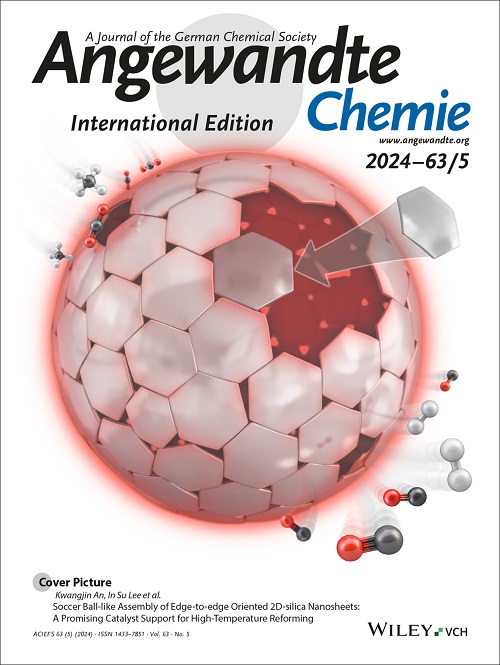Modulated Multicomponent Reaction Pathway by Pore-Confinement Effect in MOFs for Highly Efficient Catalysis of Low-Concentration CO2
IF 16.1
1区 化学
Q1 CHEMISTRY, MULTIDISCIPLINARY
引用次数: 0
Abstract
The conversion of flue gas CO2 into high-value chemicals via multicomponent reactions (MCRs) offers the advantages of atom economy, bond-formation efficiency and product complexity. However, because of the competition between reaction sequences and pathways among substrates, the efficient synthesize the desired product is a great challenge. Herein, a porous noble-metal-free framework (Cu-TCA) was synthesized, which can highly effectively catalyze the multicomponent conversion of CO2 by modulating reaction pathways. The pores with the size of 6.5 Å × 6.5 Å in Cu-TCA selectively permit the entry of propargylamine and CO2 at simulated flue gas concentrations, At the same time, the larger-sized phosphine oxide is hindered outside the pores. Control experiments and NMR spectroscopy revealed that CO2 and propargylamine in the pores preferentially reacted to form oxazolidinones, which further reacted with phosphine oxide outside the pores to produce phosphorylated 2-oxazolidinones. Therefore, the reaction pathways and sequence of the substrates were controlled by the confinement effect of the pores in Cu-TCA. Density functional theory (DFT) calculations supported the coordination of Cu-TCA with the alkyne, significantly reducing the reaction barrier and promoting catalytic reaction. This study developed a new strategy for regulating the reaction pathways to promote MCRs via the confinement effect of MOF.求助全文
约1分钟内获得全文
求助全文
来源期刊
CiteScore
26.60
自引率
6.60%
发文量
3549
审稿时长
1.5 months
期刊介绍:
Angewandte Chemie, a journal of the German Chemical Society (GDCh), maintains a leading position among scholarly journals in general chemistry with an impressive Impact Factor of 16.6 (2022 Journal Citation Reports, Clarivate, 2023). Published weekly in a reader-friendly format, it features new articles almost every day. Established in 1887, Angewandte Chemie is a prominent chemistry journal, offering a dynamic blend of Review-type articles, Highlights, Communications, and Research Articles on a weekly basis, making it unique in the field.

 求助内容:
求助内容: 应助结果提醒方式:
应助结果提醒方式:


